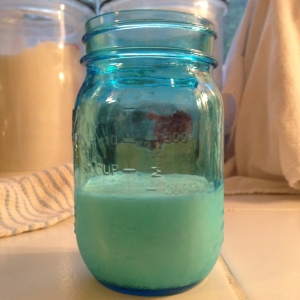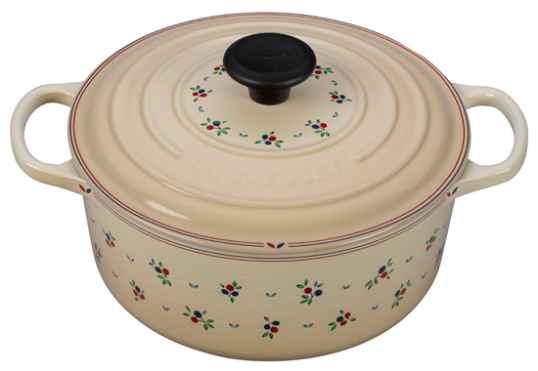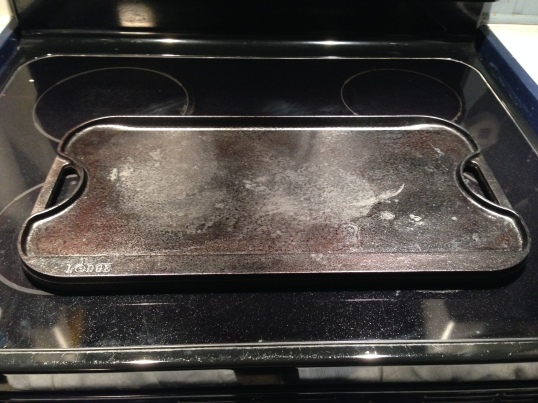When I was growing up, gravy came out of a little paper packet. You combined the gravy powder with water in a saucepan, then whisked it constantly over heat until it boiled, then reduced the heat and let it simmer for one minute. Gravy!
When I grew up and started cooking, I learned that there is another way to make gravy! (Which makes a lot of sense, because I could never figure out how people made gravy in the olden days before paper packets.) It’s a pretty simple process, and can be a lot of fun because you get to tweak the consistency and seasonings so that it’s just the way you like it. And it keeps the drippings from being wasted, the subject of which is the topic of this post!
Drippings are the combination of fats and other liquids that drain out of a piece of meat, like a pot roast or a chicken, when it is cooked. After you have removed the meat from the cooking pan, you can pour the drippings into a container and the fat will naturally separate from the juices and float to the top. In order to make gravy (or just save the fat and juices for other purposes), you have to separate the two, and there are several ways to do it:
1) Scoop method: Use a large, flat spoon to gently scoop the fat off the top of the juices.
1a) Mop method (used in conjunction with scoop method): After using a spoon to pick up most of the fat, use a paper towel, lettuce leaf, or piece of bread to sop up the remaining fat particles. This method works for small amounts of fat only.
2) Chill and scoop method: This method works well, but takes a while. Pour the drippings into a container, then either freeze for a while, or chill overnight in the refrigerator. The fat will solidify and you can just spoon it off the top in chunks.
2a) Quick-chill method: Drop an ice cube onto the drippings to more quickly chill the fat and make it easier to remove.
3) Baster method: Pour the drippings into a container, wait for the fat to rise to the surface, then stick a baster down into the juices, suck them up, and transfer them to another container. Ideally, all the fat will be left behind.
4) Baggie method: Pour the drippings into a zip-top baggie and wait for the fat to rise to the surface. Hold the baggie over a container, then snip the corner off the baggie and let the juices drain out. As soon as the fat reaches the bottom, quickly pinch it shut, then hold the baggie over a different container and let the fat drain out.
Most people won’t want a single-use tool that takes up space just for this purpose. Unless you make roast meat and gravy all the time, in which case keep reading.
5) Fat separator: This is a tool designed especially to separate the fat from the drippings. It’s basically a little pitcher with a pour spout that attaches near the bottom. You pour the drippings into it, then let it sit until the fat floats to the top. Then you just pour the bottom juices right out from underneath the fat. A lot of separators have a strainer lid, so when you pour the drippings in, most of the big pieces of gunk get strained out. I have one each of the OXO Good Grips Fat Separator and the OXO SoftWorks Fat Separator (practically the same things) in the 2-cup version. They have stoppers for the spout that prevents fat from going up into the spout when it’s being poured in, and have strainer lids. Cook’s Illustrated recommends the Trudeau Gravy/Fat Separator, which is very similar to the OXOs; it also has a strainer lid, but has a nice wide mouth to make pouring the drippings in easier. And there are some with the traditional spout: by Catamount, by Norpro, and many others.
Instead of getting one large (4-cup) separator, I got two small (2-cup) separators, because if you have only a small amount of drippings, sometimes the spout opening is too big and lets the fat into the spout.
Whether to get glass or plastic is up to you. Glass ones tend to be fragile (especially with the long, narrow spout), but plastic has a lower heat tolerance and tends to craze and crack when hot drippings are poured in over and over.
Now for the gravy! Gravy always starts with a roux, which is a paste of fat and flour cooked together. This is something that’s usually done by look, so it’s hard to give exact proportions; some people say a 1:1 ratio of fat to flour, so that’s a good place to start. The ideal texture is a paste; if it looks too dry or too greasy, just add a little more of whichever thing you need to balance it out.
Fat, for gravy, can mean either some of the fat from your drippings, or butter, or a combination of the two if your meat wasn’t fatty enough. Melt the fat in a skillet or saucepan, then add the flour and combine them thoroughly over medium-low heat. You have to cook the roux for several minutes, otherwise the flour won’t be cooked and all your gravy will taste like is raw flour. Blegh. Use your nose and eyes; the roux will start to darken from a light yellow to a brown color, and the flour will smell cooked. You can cook it as long as you want, depending on how you like your gravy to taste. If it burns, you’ll smell it. Don’t use that for your gravy; the whole thing will taste burned. Just toss it and start with another tablespoon of fat and flour.
Once your roux has cooked enough, whisk in the liquid. You can use the dripping liquid from your meat, or, if you’re starting from scratch, whatever kind of stock goes with your dish. For country gravy, use milk. If you heavily seasoned the meat before cooking, it might be too strong to use for gravy; either thin it with some water or substitute stock or broth. I always start with a little bit of liquid and just keep adding (and whisking!) until it’s the consistency I want. Even if you mess up, it’s pretty easy to fix: if it’s too thick, add more stock (milk, water); if it’s too thin, just keep cooking it until it thickens up again.
The most important thing to remember is to add the liquid gradually, whisk constantly, and don’t add more until all the lumps are whisked out.
Taste the gravy and season it with whatever you like: salt, pepper, herbs, anything. It’s so versatile, you can make it however you want.
Homemade gravy doesn’t alway work; I’ve certainly had plenty of times when the flour wasn’t cooked enough, or was cooked too much, or the drippings were way too salty, or any number of other problems. But it’s a great thing to know how to do, in case you don’t have a little paper packet, and you don’t have to waste all the wonderful drippings from your meat!


























